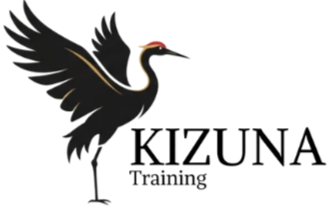
Where Is in Japanese: Master the Essential Phrase for Travelers
Where Is in Japanese: Master the Essential Phrase for Travelers
Introduction
If you’re planning a trip to Japan or learning the language, one of the most essential phrases to know is "Where is...?". From finding a train station to asking for a restroom, this simple question can significantly enhance your travel experience.
According to the Japan National Tourism Organization, over 30 million tourists visit Japan annually, yet language barriers remain one of the top challenges they face. Learning how to say "Where is" in Japanese not only helps you navigate with ease but also shows respect for the local culture.
This guide will teach you how to say "Where is" in Japanese, offer practical examples, and provide tips for smooth communication. For a more immersive and effective learning experience, check out Kizuna Training’s personalized courses.

The Basics of Saying 'Where Is' in Japanese
Using 'Doko' (どこ) for Asking Locations
The Japanese word for "where" is "doko" (どこ). To ask "Where is...?", you can use this structure:
- [Subject] wa doko desu ka? (~はどこですか?)
Examples of Basic 'Where Is' Questions
-
Toire wa doko desu ka? (トイレはどこですか?) – "Where is the restroom?"
-
Eki wa doko desu ka? (駅はどこですか?) – "Where is the train station?"
-
Hoteru wa doko desu ka? (ホテルはどこですか?) – "Where is the hotel?"
💡 Tip: The phrase "desu ka" (ですか) adds politeness, making it appropriate for formal interactions.
Polite vs. Casual Ways to Say 'Where Is'
Polite Speech for Formal Situations
In formal settings, always include "desu ka" (ですか) to maintain respect. This is essential when speaking with strangers, service staff, or elders.
- Example: Resutoran wa doko desu ka? (レストランはどこですか?) – "Where is the restaurant?"
Casual Speech for Friends and Peers
When speaking with friends or peers, it’s common to drop "desu ka" and simply say:
- Example: Eki wa doko? (駅はどこ?) – "Where’s the station?"
Common Phrases for Directions in Japanese
Questions for Specific Locations
-
Koko wa doko desu ka? (ここはどこですか?) – "Where is this place?"
-
Kaban wa doko desu ka? (かばんはどこですか?) – "Where is my bag?"
Additional Vocabulary for Directions
- Migi (右): Right
- Hidari (左): Left
- Chikaku (近く): Nearby
- Massugu (まっすぐ): Straight ahead
💡 Pro Tip: Combine directional vocabulary with "doko" to clarify instructions. For example:
- "Toire wa migi ni arimasu." (トイレは右にあります。) – "The restroom is to the right."
Cultural Tips for Asking 'Where Is' in Japan
Bow and Smile for Polite Interactions
When asking for directions, a slight bow and a friendly smile show respect and politeness. Even if you’re speaking in simple Japanese, your demeanor will leave a positive impression.
Be Ready for Helpful Locals
Japanese people are known for their hospitality. Don’t be surprised if someone goes out of their way to guide you to your destination. Respond with "Arigatou gozaimasu" (ありがとうございます) to express your gratitude.
Learn Japanese the Right Way with Kizuna Training
Go Beyond Phrases with Personalized Training
While apps and phrasebooks can teach you basic questions, Kizuna Training goes further by helping you master Japanese in real-life contexts. Learn how to confidently ask questions, understand responses, and build meaningful interactions.
Practical Resources for Real-Life Situations
Explore our Guides for detailed tips on travel-focused phrases, or enroll in our comprehensive courses for full language immersion.
💡 Start your journey today! Visit Kizuna Training to unlock your Japanese language potential.
Conclusion
Mastering "Where is" in Japanese is an essential skill for travelers and learners alike. Whether you’re navigating bustling cities, asking for directions, or engaging with locals, phrases like "Toire wa doko desu ka?" ensure you can communicate effectively and respectfully.
For a deeper dive into Japanese culture and language, trust Kizuna Training to guide you every step of the way. With tailored programs, expert instructors, and real-world applications, we make your learning journey smoother and more rewarding.


